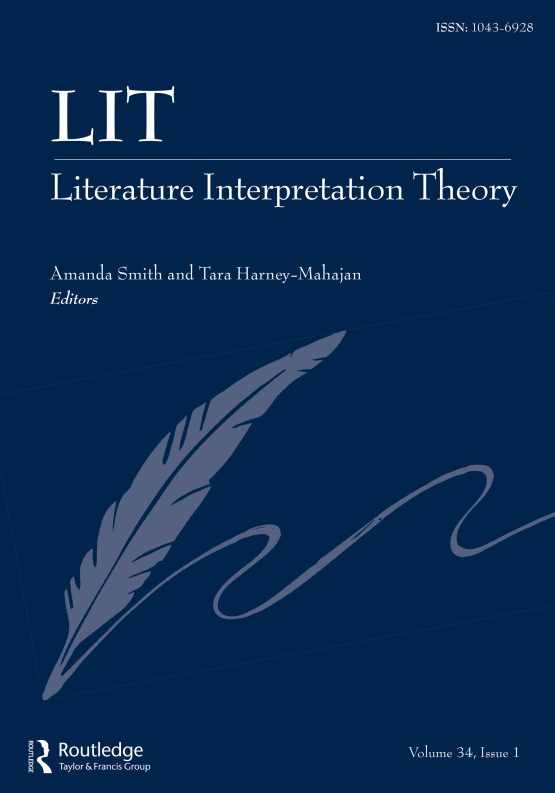Submit a Manuscript to the Journal
Lit: Literature Interpretation Theory
For a Special Issue on
Face, Form and Modern Fictions
Manuscript deadline
15 April 2025

Face, Form and Modern Fictions
This special issue will examine the role of the face in modern fictions. With the idea of “fiction” broadly construed, this issue seeks essays that examine some aspect of the evolution of the face in modern literary and visual culture and its relation to what Marion Zillo has called the “technics that exteriorize it,” literature being one of them. For example, in work by modernists like Ezra Pound, T.S. Eliot and Mina Loy, prosopopoiea, the lyrical act of face-making, allowed for the fictionalizing of subjects and the exploration of radical modes of identity and relation. Influenced by the nineteenth-century “science” of physiognomy, early twentieth-century writers such as Joseph Conrad, Henry James, Virginia Woolf, Nella Larsen, and Djuna Barnes explicitly linked the face and its claims to reveal the “truth” of a subject to the writing and reading of fictions. At the same time that texts by these authors engaged in the production of faces, they also employed narrative strategies of defacement to represent inner life, often in an effort to avoid objectifying racialized, disabled, or queer subject positions.
Essays in this collection might consider the broader frame, antecedents for, and/ or contemporary aspects of such a literary interest in faces. More specifically, what changes in the subject, person, or personality are suggested by the changing literary form of the face and the techniques of its production? How do faces, or conversely, the absence of faces, function in the writing and production of novel literary forms, both modernist and contemporary? What are the political and ethical stakes of these operations? Finally, how might we connect the different media involved in visualizing the face–painting, digital, or in film, for example–to its construction in literature? For critics like Jenny Edkins, a contradiction attends our consciousness of face: between its potential disappearance into “a world of digital images and the post-human” and our simultaneous sense of its “endur[ance] as an emblem of political personhood.” For Edkins, the “face is a politics” produced by specific political systems that see it as a “necessity.” In an era in which artificial intelligence, medical masks, digital image production, filtering aps and interventions like Botox shape the way we see other faces, what can literary faces tell us about the potential agency of the face in our current moment and beyond?
Essays may explore the following genres and topics, although this list is not exhaustive:
- Literature from a variety of genres, including
- Fiction
- Poetry
- Satire
- Periodicals
- Essays
- Drama
- Visual culture (i.e. caricatures, cartoons, illustrations, film, photography)
- Digital culture (digital image production, screens, zoom)
- Artificial Intelligence (surveillance, Facial Recognition Technology, privacy)
- Modernism
- Physiognomy and its History, in particular, facial typologies
- Contemporary Literature
- Genre Studies
- Periodization
- Form and Formal Techniques (such as the close-up and the portrait)
- Race and Racialization
- Plastic Surgery and Facial Reconstruction
- History of Science and Medicine
- Disability Studies
- Faciality in Queer and Trans-Studies
Looking to Publish your Research?
Find out how to publish your research open access with Taylor & Francis Group.
Choose open accessSubmission Instructions
LIT: Literature Interpretation Theory, co-edited by Dr. Tara Harney-Mahajan and Dr. Amanda Smith, publishes critical essays that employ engaging, coherent theoretical perspectives and provide original, close readings of texts. Submissions must use MLA citation style and should range in length from 5,000-9,000 words. Please direct any questions relating to this CFP to the guest editor Dr. Rochelle Rives at [email protected]
LIT: Literature Interpretation Theory also welcomes submissions for general issues.
Guest Editor: Professor Rochelle Rives, BMCC-CUNY